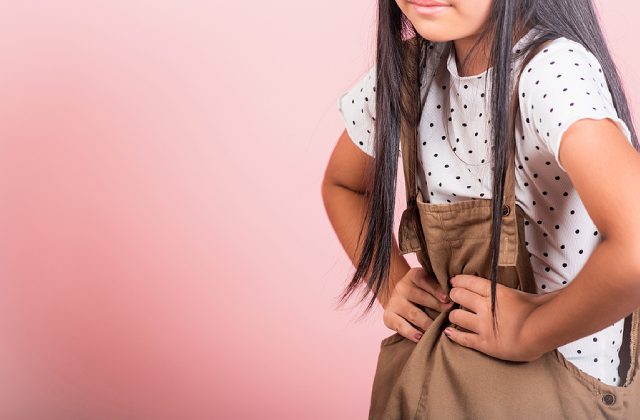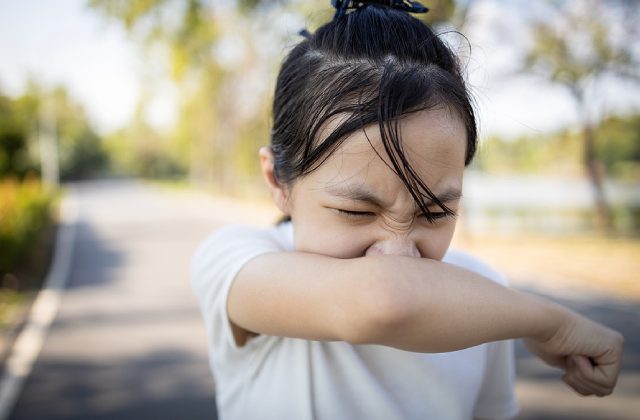This article written by Dr Mohana at the start of the Covid-19 pandemic in February 2022, was published widely on Yahoo! Life, The Asian Parent and AsiaOne.
Here’s why surgical and N95 masks may not be suitable or effective to protect very young children against viruses.
As a precaution to guard against the spreading of the Wuhan novel coronavirus (COVID-19), first called 2019-nCoV, it is advised that those who are sick and have respiratory symptoms like a cough or a runny nose wear face masks.
For example, the Ministry of Health in Singapore has advised that normal surgical masks may be more appropriate for the general public to use, as opposed to N95 masks.
Which is better, the N95 or surgical mask?
The N95 mask has been positioned as a superior mask with less filter penetration of virus particles and face-seal leaks, while allowing less inward leak of environmental particles.
Although the N95 mask theoretically offers better protection than a surgical mask, several studies conducted amongst healthcare workers show that they may not offer superior protection to a simple face mask against acute transmissible respiratory infections (such as the influenza virus which is transmitted by droplet spread, similar to the Wuhan coronavirus) in a clinical setting.
That said, are these masks suitable for our children and toddlers?
How effective are face masks for children?
An effective face mask seal requires moulding of the top of the mask over the nasal bridge, and the bottom of the mask pulled down over the chin. Masks are not effective once they are wet or soiled.
When it comes to children, attempting to have your toddler or young child keep a face mask on can be a challenging task, so it’s important to remember 2 important factors when choosing a face mask for them – fit and comfort.
A crying toddler who is uncomfortable and struggling is not likely to have an effective mask on. An uncomfortable child is also more prone to grab and touch their face more, making the spread of infection through mucosal surfaces more likely.
Face masks, especially the N95, may not be suitable for infants and younger children
Masks are generally not suitable for infants and younger toddlers below the age of 3. When masks are worn, they increase the resistance against breathing coupled with an increase in the levels of carbon dioxide in the dead space contained behind the mask. This may result in hypoventilation in infants and children below the age of 3 (who have smaller lung capacities) and poorer clearance of carbon dioxide. This accumulation of higher levels of carbon dioxide can be dangerous.
Most of the available N95 masks currently available in the markets are appropriate for an adult fit and may be more suitable for children above the age of 12.
For children aged 7 – 12, a study on specialised paediatric N95 masks showed that these can be used safely during routine physical activities such as reading in class, walking to school, or catching a bus, without significantly compromising a child’s ability to breathe. However, there are few suitable brands on the market which cater to this age group. Safety of the N95 mask for younger children has not been evaluated and are not recommended.
Can older children use face masks?
Some older children may benefit from the use of face masks. Older children who are more susceptible to infections and their complications, such as those with chronic respiratory conditions, significant heart disease, progressive neurological conditions, or are immunosuppressed, should wear face masks to protect themselves.
How can I help protect my children from viruses?
Medical evidence shows that it is more important to practise these following measures:
- Teach your child good hand-washing techniques using soap and water, or assist your toddlers with washing their hands.
- Teach them good hygiene etiquette which includes coughing and sneezing into their elbows or into a tissue paper. They should dispose of tissue papers immediately after use and wash their hands.
- Avoid bringing your young children and infants to confined and crowded spaces such as shopping malls or markets as such activities can increase the likelihood of infectious diseases spreading. In fact, this might be the most important step in reducing transmission of viruses.
A randomised controlled trial done in Thailand in child and adult household contacts of children with Influenza A (H1N1) during the 2009 pandemic demonstrated that neither hand-washing nor the use of child face masks reduced the incidence of household spread of influenza where 90% of family members shared the same bedroom and sleeping arrangements with prolonged close proximity contact.
This means that transmission between family members in prolonged close proximity and contact can be hard to prevent despite practising good hygiene practices.
Hence, it is also important to take necessary steps to prevent yourself from falling ill, and recovering quickly in order to prevent spreading the virus to others.
This article was contributed by Dr Mohana Rajakulendran. This article was first published on Health Plus, an online health and wellness resource developed by Parkway Hospitals, Singapore.
References
Goh, D. Y. T., Mun, M. W., Lee, W. L. J., Teoh, O. H., & Rajgor, D. D. (2019). A randomised clinical trial to evaluate the safety, fit, comfort of a novel N95 mask in children. Scientific Reports, 9(1). doi: 10.1038/s41598-019-55451-w
Radonovich, L. J., Simberkoff, M. S., Bessesen, M. T., Brown, A. C., Cummings, D. A. T., Gaydos, C. A., … Perl, T. M. (2019). N95 Respirators vs Medical Masks for Preventing Influenza Among Health Care Personnel. JAMA, 322
Simmerman, J. M., Suntarattiwong, P., Levy, J., Jarman, R. G., Kaewchana, S., Gibbons, R. V., … Chotipitayasunondh, T. (2011). Findings from a household randomized controlled trial of hand washing and face masks to reduce influenza transmission in Bangkok, Thailand. Influenza and Other Respiratory Viruses, 5
Smith, J. D., Macdougall, C. C., Johnstone, J., Copes, R. A., Schwartz, B., & Garber, G. E. (2016). Effectiveness of N95 respirators versus surgical masks in protecting health care workers from acute respiratory infection: a systematic review and meta-analysis. Canadian Medical Association Journal, 188
Taussig, L. M., Harris, T. R., & Lebowitz, M. D. (1977). Lung Function In Infants And Young Children: Functional Residual Capacity, Tidal Volume, and Respiratory Rate. American Journal of Respiratory and Critical Care Medicine, 116(2), 233–239. doi: 10.1097/00132586-197810000-00036
Ting Wei, T. (2020, February 3). Public should use surgical masks, not N95 masks, to guard against Wuhan virus spread: Experts. Retrieved February 5, 2020, from https://www.straitstimes.com/singapore/health/public-should-use-surgical-masks-not-n95-masks-to-guard-against-wuhan-virus-spread




